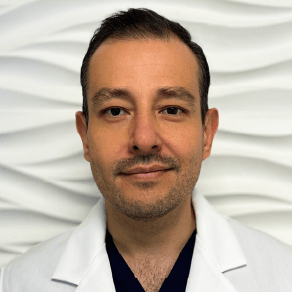As early as the 20th century, the first cell cultures were developed, giving rise to what is now known as regenerative medicine or tissue engineering—an area that has transformed our ability to treat diseases once considered incurable.This new blog will explore the most recent advances in stem cell therapy and how these treatments have transformed the lives of millions of patients worldwide.
🔬 Are Stem Cells Part of Regenerative Medicine?
Not only are stem cells a part, they are the cornerstone of regenerative medicine, as they have driven much of the research and treatments in this field. Regenerative medicine is an interdisciplinary approach that combines medicine, biology, and engineering to develop treatments that repair or regenerate damaged tissues.
Before regenerative medicine and stem cell therapy, the treatment of many diseases was limited to alleviating symptoms and slowing down—where possible—the progression of conditions. Neurodegenerative diseases such as Alzheimer’s, joint conditions like arthritis, and heart diseases (among others) had discouraging long-term prognoses.
📜 A Brief History of Stem Cells
Here is a review of the most notable advancements in stem cell research and treatment:
- The first concept of regenerative medicine and stem cells emerged in 1938 when Alexis Carrel and Charles Lindberg published The Culture of Organs, laying the groundwork for tissue replacement.
- It wasn’t until the 1970s and 1980s that research began to pick up pace, and the concept of “tissue engineering” was introduced in 1987 by the U.S. National Science Foundation. In 1988, the first scientific meeting was held with this term in the title. The advent of stem cell technology further fueled the expansion of this field, making it the largest area of regenerative medicine.
- At the end of the 1990s, research on embryonic and hematopoietic stem cells began, although it still took years to apply these findings.
- It wasn’t until the mid-2000s that stem cells—especially embryonic, umbilical cord, and adult stem cells—began to be used, opening new research lines on pluripotent stem cells.
- In recent years, over 300,000 patients are estimated to have benefited from stem cell transplants, and predictions for the near future are promising, as these cells have applications in health areas like traumatology, orthopedics, nerve tissue repair, cardiovascular conditions, and degenerative diseases like diabetes and cancer.
🧬 Advances in Stem Cell Therapy Research
Stem cells have become a fascinating area of research due to their anti-inflammatory, immunomodulatory, and regenerative properties. As a result, research has focused on:
🧪 Induced Pluripotent Stem Cells (iPSC)
iPSCs are an ever-growing area of research due to their ability to become any type of cell in the body, without the ethical dilemmas surrounding embryonic or umbilical stem cells.
One research area for iPSCs focuses on genetic diseases, creating disease models in the lab, testing regenerative therapies, and developing new treatments.
Another interesting area involves creating organoids that mimic the structure and function of real organs, such as kidneys or hearts. These organoids not only allow the study of diseases and testing of new drugs but also open the door to 3D bioprinting of organs for transplants.
💉 Personalized Cell Therapies
Stem cell therapies have shown excellent results in treating neurodegenerative diseases like Alzheimer’s, Parkinson’s, and ADHD. However, their use is not limited to this area; they have also demonstrated their potential in repairing heart tissue after a heart attack, speeding up fracture recovery, and even regenerating soft tissues such as cartilage, skin (for burns), and organs like the lungs.
Hematopoietic stem cell transplants from bone marrow have also proven highly effective in treating hematological and oncological diseases. There is even ongoing research into their potential to reverse Type 1 diabetes by restoring the ability to produce insulin.
💊 Pharmaceutical Products
The properties of stem cells are not limited to regenerative medicine. Their ability to secrete growth factors, cytokines, and exosomes is also used in the pharmaceutical sector to formulate products such as injectable medications, hair treatments, and skin treatments.
⚖️ Current and Future Challenges
Despite these remarkable breakthroughs, stem cell therapies still face significant challenges:
- Rejection. In stem cell transplants, both autologous (from the patient) and allogeneic (from a donor) cells are used, and in both cases, there is a risk of immune rejection. This risk is lower in autologous cells, but it still exists.
- Safety. Stem cells must be analyzed by specialists before treatment to ensure they do not form tumors, contain diseases, or have long-term side effects.
- Accessibility. Stem cell therapies are expensive, especially for specialized applications. This poses a challenge for patients seeking hope in regenerative medicine.
🌟 The Future of Stem Cells is Now
Currently, the field of regenerative medicine is in a “golden era,” as every day scientists and stem cell specialists, like the team at StemLife Clinic, have seen firsthand how cell therapies transform patients’ lives and offer hope where there was once only palliative care. Many patients seeking stem cell therapy in Mexico are discovering effective and accessible options at clinics like StemLife.
This journey is ongoing, and new applications and benefits of cell therapy are being discovered every day. If you are interested in experiencing the benefits of these treatments, and want to learn more about stem cell treatment costs, now is the time to begin your evaluation at StemLife Clinic, where we will help you regain your quality of life.

